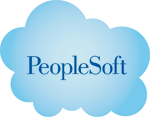 The last PeopleSoft Update Manager (PUM) images have been delivered in two formats: the traditional VirtualBox image and a newly introduced format: NativeOS.
The last PeopleSoft Update Manager (PUM) images have been delivered in two formats: the traditional VirtualBox image and a newly introduced format: NativeOS.NativeOS takes advantage of PeopleTools 8.55 Deployment Packages (DPK), which is the cornerstone for the PeopleSoft Cloud Architecture. This new cloud architecture facilitates the deployment of PeopleSoft applications in the cloud, not only covering Oracle Public Cloud but also other providers such as Amazon Web Services (AWS), Google Cloud and Microsoft Azure.
Creating the AWS Instance
At BNB we have been using Amazon Web Services for a while, so it was our natural choice for installing the PeopleSoft HCM Update Image #17. We have done so in a Windows 2012 server using the m4.large instance type, which allocates 2 vCPUs and 8 Gb of RAM. In terms of disk, we have allocated 200 Gb in order to have the needed space for the image download and installation.Once the instance was created, we downloaded the NativeOS update image from My Oracle Support. Once of the good advantages of NativeOS deployments is that the size of the download is less than the traditional VirtualBox one. Still, the size is considerable, but the network throughput in AWS instances is quite good.
Before proceeding with the installation, you need to edit the c:\windows\system32\drivers\etc\hosts file in order to include the internal server name in it:
127.0.0.1 <server name>.<zone>.compute.internal
The full server name can normally be found in the desktop top right corner.
Once this is done, we are ready to proceed with the DPK installation. For further information on this, I suggest you check My Oracle Support.
Allowing External Access
If you would like to access the PeopleSoft Update Image without connecting with remote desktop to the server, you will need to take some additional steps.Firstly, you will need to edit the security group linked to your AWS instance so you allow incoming TCP connection at the 8000 port, which is the port used by the PeopleSoft Update Image web server by default.
On top of this, you will need to change the firewall setting in the Windows server itself. This is done within the Windows Firewall with Advance Security application, on which you need to define an inbound rule also allowing 8000 port TCP connections:
Finally, if you want to use the same IP address every time you use the AWS instance, you will need to define an Elastic IP and associate it with the server. This fixed IP address has an additional cost, but if you are planning to distribute the URL to access the PeopleSoft application to other people who does not have access to the AWS Console in order to check the current IP address, it may be the only way to go.
